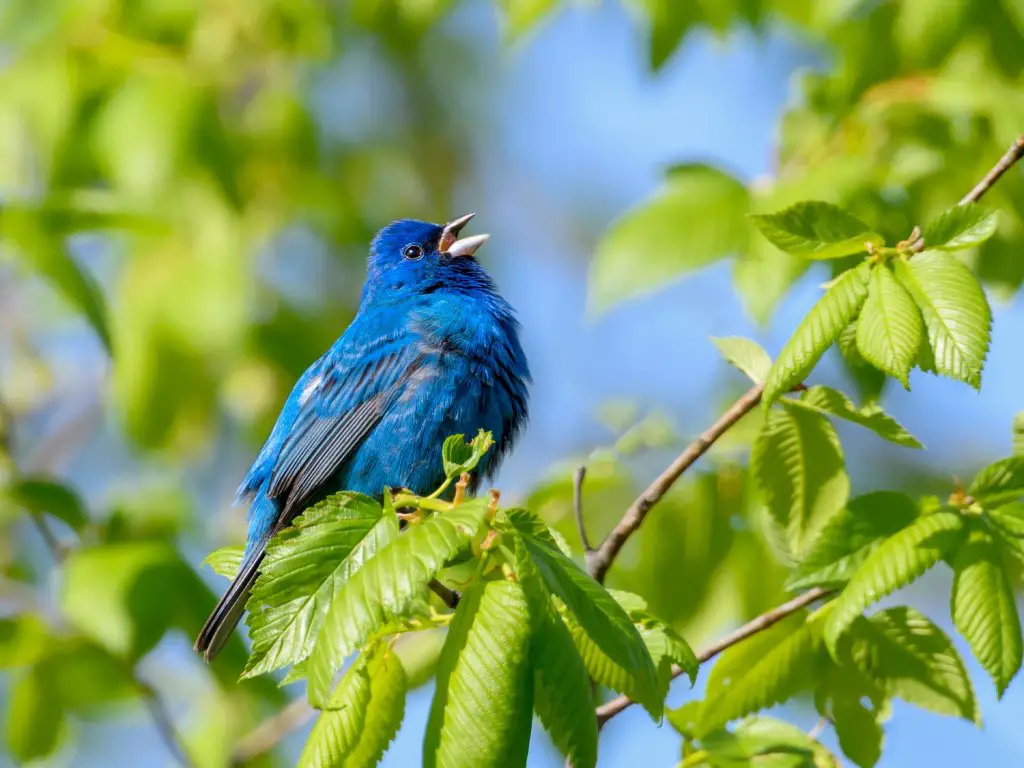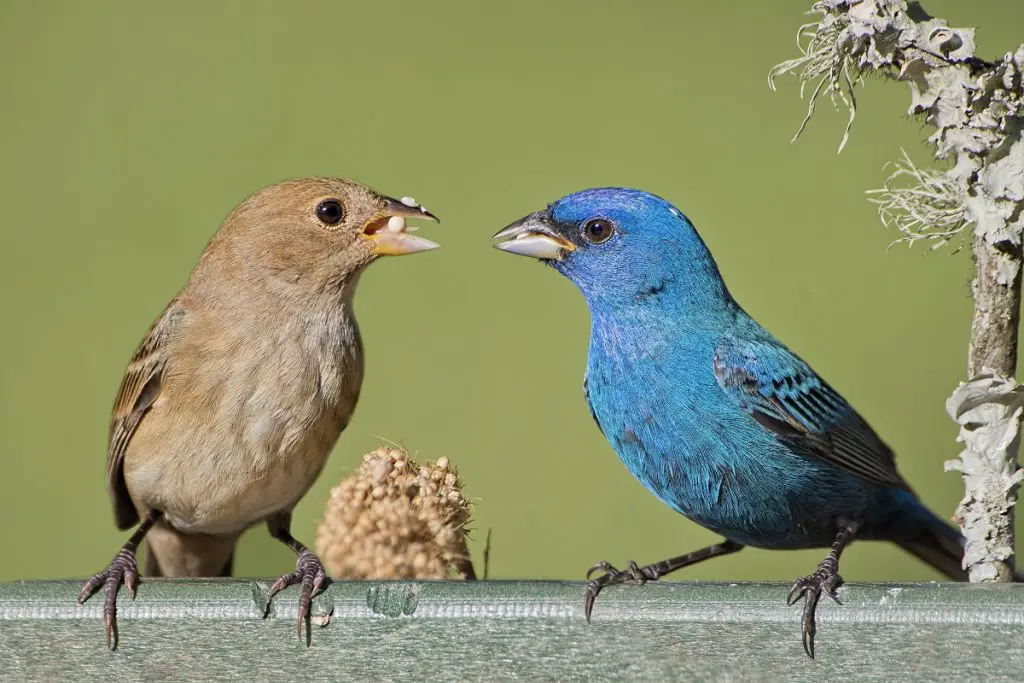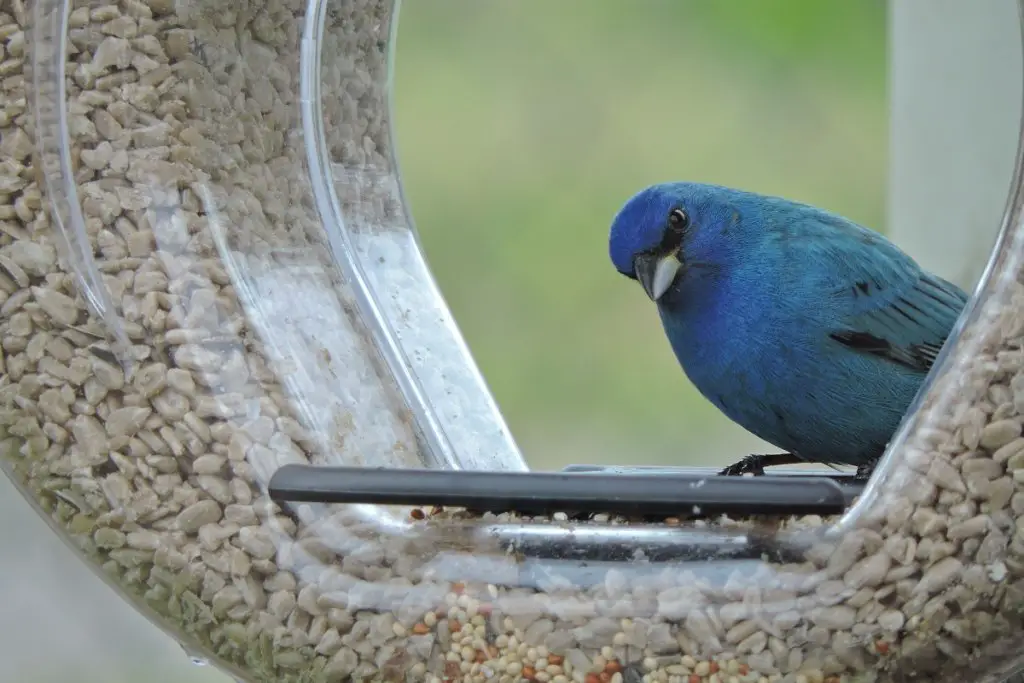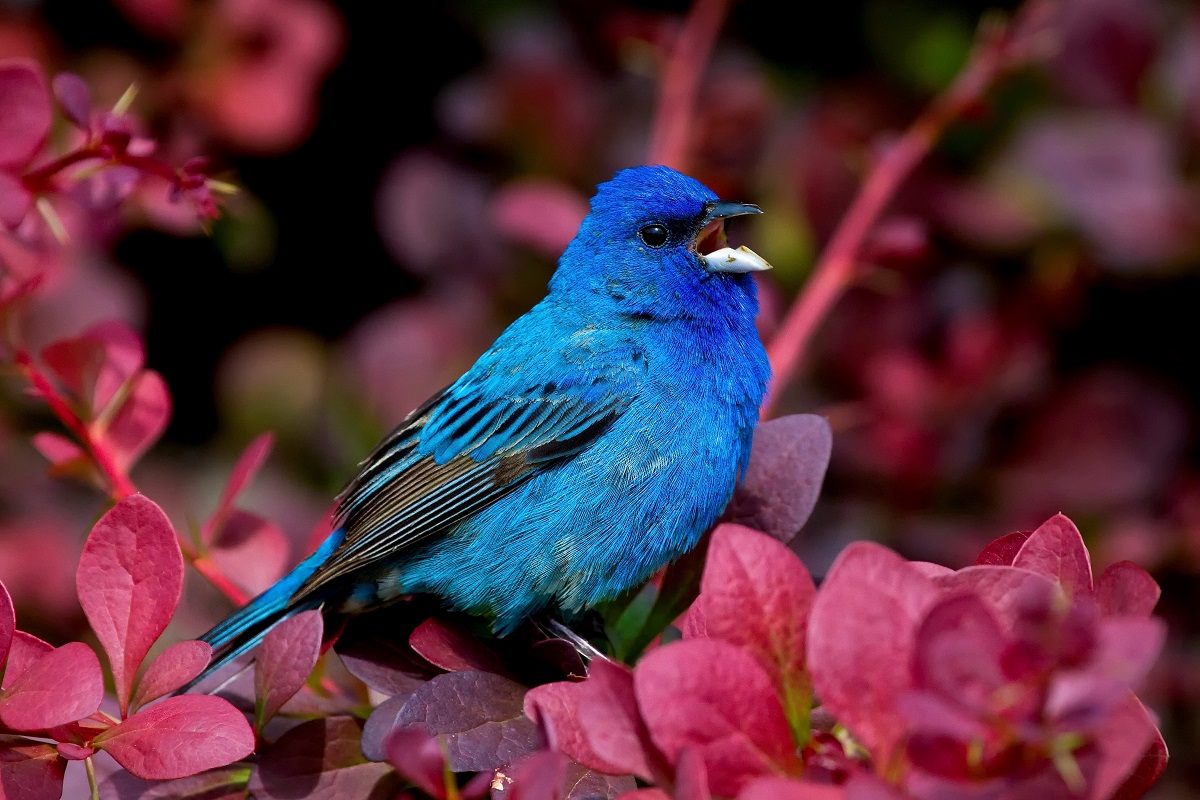Male Indigo Bunting's songs are bright, lively, and energetic. On average, a male Indigo Bunting sings up to 200 songs per hour. In addition to mating calls, these Indigo Buntings have a series of unique calls and chirps to communicate with other birds.
Indigo Buntings (Passerina cyanea) are one of the few true bluebirds found in North America (not to be confused with the Blue grosbeak.) They have lively and energetic songs that they sing throughout the mating season, which typically lasts between June through September.
In addition to their cheery mating calls, the Indigo bunting has a few other ways of communication. Their chip calls help them locate other birds or alert others of a nearby hawk, while contact calls are ways these birds talk to each other while nesting or foraging for food.
If you want to learn how to identify the different bird calls of the Indigo bunting and how to attract these beautiful birds to your backyard birdfeeders, check out this breakdown below.

What Is The Indigo Bunting Song?
The Indigo Bunting song is bright, energetic, and consists of high-pitched notes. What’s interesting about the adult male Indigo Buntings call is that they sing a series of 200 songs per hour during mating season. Their songs can be heard from dawn to dusk.
Their calls range anywhere from chip, zeep, and spit calls that can indicate anything from mating calls, contact calls, and alarm calls. Let’s dive into the different Indigo Bunting songs and what they mean.
Indigo Buntings Calls
Just like any other songbird, the Indigo Bunting song has a few different notes used to communicate with each other. The mating call is their most noted song and is often heard during mating season. However, aside from the male Buntings mating call, there are a few other distinct bird sounds worth noting.
Chip Call
Chip calls are a way to sound the alarm if a predator is nearby. They are very short, high-pitched one-syllable notes that Indigo Buntings use to indicate danger. The frequency of these notes increases with intensity based on the threat level. In high-threat situations, the chip call gives way to a more frantic tink call.
The chip calls in Indigo Buntings are very similar to Sparrows, Black Terns, Warblers, and Blue Birds. Even the most skilled birdwatcher can confuse the chip calls between these songbirds.
Zeep Or Contact Call
Sometimes the chip call is also by the Indigo Bunting as a contact call, but other times they use a quick zeep call to communicate with each other while in flight. Contact calls are simple ways for songbirds to communicate with each other easily. If you have even seen a group of birds at your feeders chirping away, it’s a way for them to locate each other.
Mating Calls
While contact and alarm calls are difficult to distinguish from other bird species such as Sparrows, their mating call is unmistakable. During the breeding season, the male Indigo Bunting perches on a high branch and sings his mating call at least 200 times per hour.
The mating call is a series of double-notes described best as “sweet, sweet, chew, chew, see-it, see-it.”.
Breeding season starts a little later than other songbirds. It begins in June and lasts through September. While the birds are often monogamous, the male may have another partner right in the neighborhood.

Female Call
Female Indigo buntings are neither heard nor seen. They retain their brown color all year long. While male Indigo buntings perch high on telephone wires or fence posts along the roadside to sing their mating calls, females don’t make a peep. They often hide in thick brush along forest edges and take on all the responsibilities of raising her broods.
While the female doesn’t sing, it will emit a chirp or chip call when alarmed or as a way to communicate with other birds.
Indigo Bunting Neighborhoods
Not all Indigo Buntings birdsong sounds are identical from state to state. While the frequency and pitch are very similar from bird to bird, the exact song varies. Young Indigo Buntings learn mating calls from their parents or other birds, which creates something called “song neighborhoods,” or specifically, “Indigo Bunting neighborhoods.”
If you hear the song of an Indigo Bunting in your neighborhood, it may not be the exact same song found in a different part of the state (or even a few hundred yards away). The local songs have been known to characterize an area for 20 years!
Comparing Bunting Songs
There are three species of Buntings: Indigo, Painted, and Lazuli. The Indigo Bunting is the most common in North America and breeds in the eastern portion of the United States before migrating to Mexico and South America in the winter. If you hear a birdcall in the east during the summertime, odds are it’s an Indigo Bunting.
If you live in the western portion of North America and hear a bunting, it’s a Lazuli Bunting. Lazuli Buntings breed as far North as Canada during breed season and migrate to the southern tip of the United States in the winter.
Painted Buntings are rarer and only found along the coastline in the Carolinas, Georgia, and Florida, and most parts of Texas and Louisiana.
If you hear a Bunting, your location is the easiest way to determine what type of Bunting it is before you even see it!

How To Attract Buntings To Your Backyard
Buntings love berries! If you want to admire the beautiful blue plumage of an Indigo Bunting, finding foods they love is vital. Planting berry bushes like strawberries, blackberries, and raspberries are a great way to lure these birds into your backyard space.
When the growing season is over, opt for birdfeeders stocked with their favorite seeds. Black sunflowers seeds are a great and cost-effective option; they will munch on them all season.
In the springtime, try hanging white proso millet suet feeders or finch feeders with white proso millet to attract these birds as these migrants make their way to your area.
Add a few bird baths, and let the bunting bird watching commence!

